 Confucius
Confucius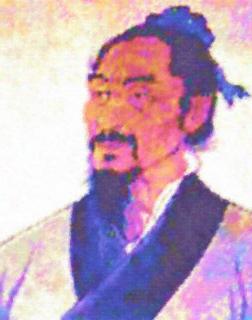 Mozi (ca. 470 - ca.391 BCE)
Mozi (ca. 470 - ca.391 BCE)Hist 410_2
Keynotes 2
The Crucial Millenium
The Zhou Dynasty (1045 BCE- 221 BCE): Western Zhou (1045-771 BCE) / Eastern Zhou (770-221 BCE)
The name for the Zhou Dynasty is derived from Zhouyuan, a location at the Qishan Mountains where the former vassals of the Shang moved when they faced repeated attacks by the Rong and Di 'barbarians'. The legendary founder of the Zhou was Houji, Lord Millet. who was not only revered as the earliest ancestor of the Zhou rulers but was deified as Shennong, the God of Agriculture.
- Western Zhou tools: stone; bone; wood
- crops: millet; SOYBEANS (introduced ca. 1000 BCE) and cultivated in the Eastern Zhou; silk, hemp, rice, wheat, barley; beans; total names of food plants mentioned in the Book of Songs: 44
- Eastern Zhou tools: cast iron (used for agricultural tools and weapons)
The influential philosophies of the day, Confucianism and Mohism, ask
for a responsible government that cares for a fair distribution of goods without
exploiting the people.
 Confucius
Confucius
 Mozi (ca. 470 - ca.391 BCE)
Mozi (ca. 470 - ca.391 BCE)
The Yin - Yang School stressed the balance that was to be achieved in life by balancing the male, yang, and the female, yin, energy as well as the five phases of change between the Five Elements: Earth, Wood, Fire, Metal, Water which are associated with the Five Tastes: sour, bitter, sweet, hot, salty and the Five Smells: rancid, scorched, fragrant, rotten, putrid.
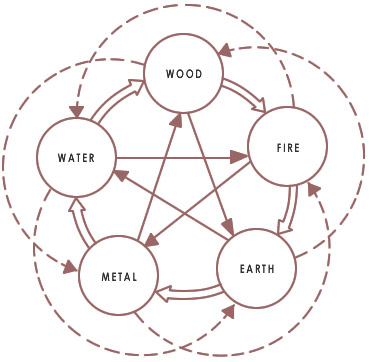
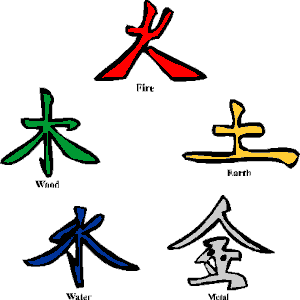
All philosophical schools were concerned with agricultural politics
and thus with sustaining the population. According to those schools that explicitly
deal with the question of food,
- a mindful use and distribution of resources to preserve the supply of game
and fish,
- the nutritional value as well as
- the medical qualities of food were to be considered by the
ruler and his officials. In addition the ruler as a role model at the head of
the social pyramid had the obligation to perform rituals that reminded the population
of the social hierarchy, encompassing the living and the dead ancestors.
The first comprehensive agricultural policy devised to be followed by the central government was developed in the
Qin (221 BCE-207 BCE) and Han Dynasties (206 BCE -
220 CE).

The territory of the Qin Dynasty
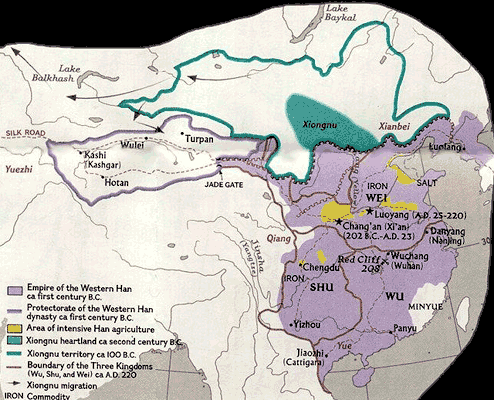
The Han empire
The most important points of successful Han rule were:
1. moderate land taxes
2. maintenance of a class of independant small farmers
3. agricultural extension / government compilation of agricultural encyclopedias
4. public works: irrigation systems; ever-normal granaries
5. famine relief
6. concern with supply of food and medical substances
Legalist law under the Qin had banned Confucian writings
but preserved writings on agriculture and medicine to disseminate knowledge
in both disciplines. ('Books' at the time where bundles of bamboo strips attached
to each other by strings. Paper had not been invented yet.)
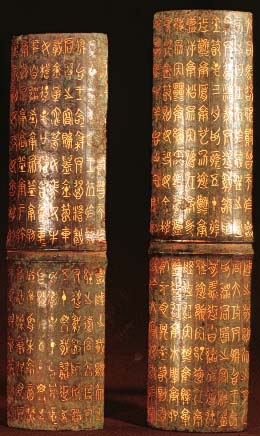
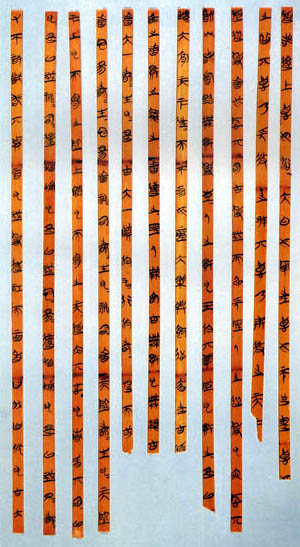 Books made of bamboo strips
Books made of bamboo strips
Public works included the irrigation system of the Min River
in Sichuan constructed by the Li Bing and his son. This irrgation system is
effective until today and has not like other projects that aimed to control
the current of the rivers resulted in man-made catastrophies.
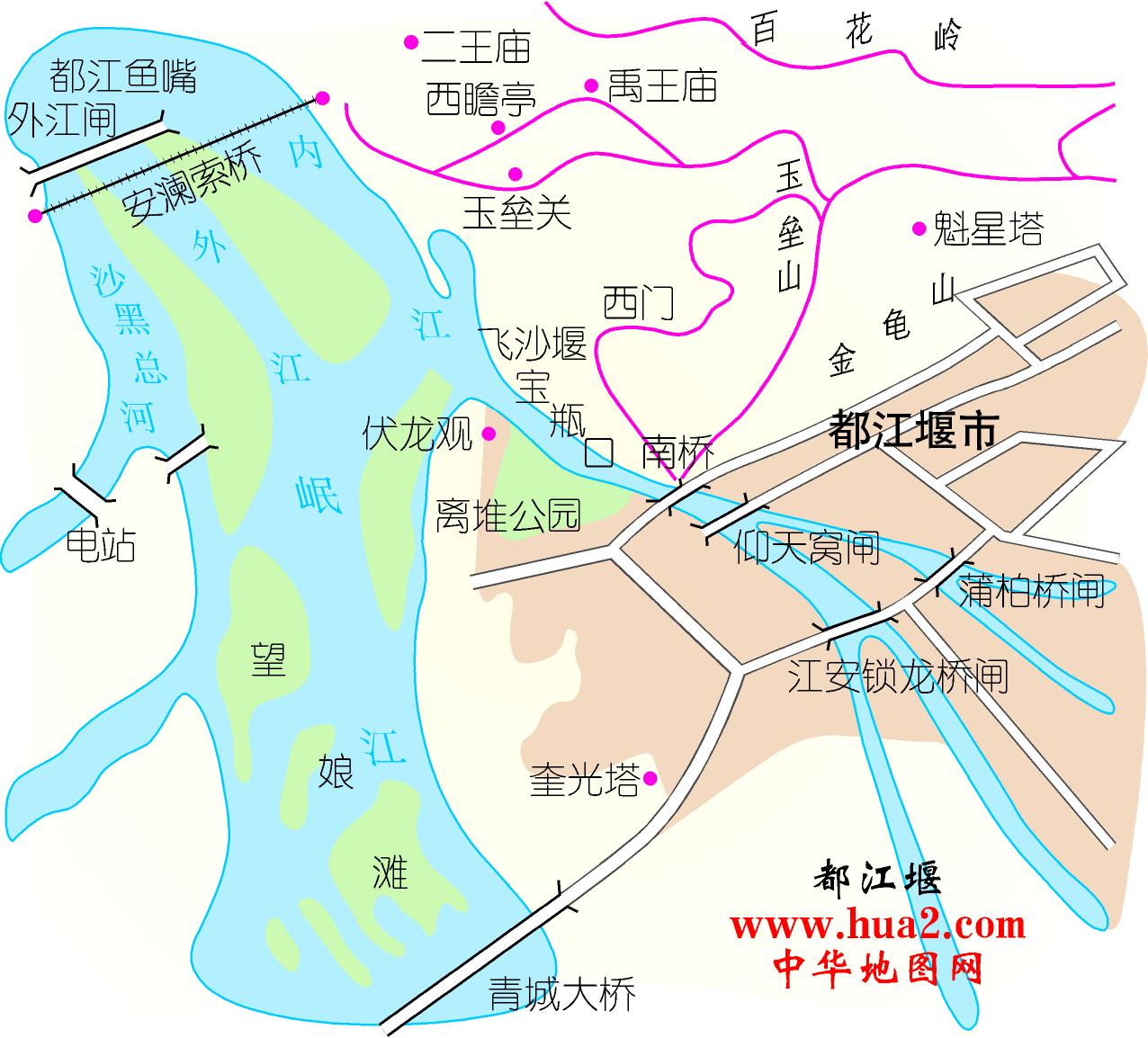
Irrigation project of the Min River in Sichuan by Li Bing and his son
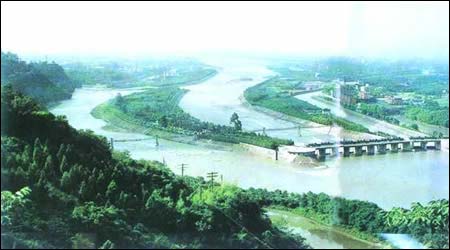 Division of Min River
at Dujiangyan
Division of Min River
at Dujiangyan
During the Han Dynasty the population increased while
the size of landholdings decreased. Farmers who lived near cities in the Han
faced a double challenge: They not only had to increase the surplus in food
production beyond the level of subsistence, they also had to leave barter trade
and engage in financial transactions.
With the revival of Confucianism after the fall of the Qin Dynasty, ceremonies
of plowing (by the emperor) and sericulture (by the empress) were restored.
The rituals marked the beginning of the agricultural season in the spring. The
concern to disseminate knowledge lived on: In the first century BCE a manual
described in detail how agricultural measures helped to provide successful planting.
It described:
1. multiple cropping; timely watering, fertilizing, weeding
2. treatment of seeds with fertilizer before sowing
3. irrigation of rice paddies and circulation of water by rerouting irrigation
channels for optimized water temperature
4. methods of trapping water in the soil and killing eggs of potentially devastating
insects
5. pit cultivation and pot irrigation for water trapping
6. care for gourds and melons to protect them from rotting
7. ridge cultivation for drainage purposes
8. different soils for different purposes
In early Han times the food resembled the food of the Zhou (boiled grain and
beans; steamed grain). By the end of the Han people
- preserved food by pickling, fermenting, and salting. Soybeans were fermented
to obtain soysauce and they were made into doufu (tofu).
- made different kinds of noodles by using fine flour from mills and
- different oils from sesame and perilla seeds
- produced beer
- and had invented the stirfrying process
- and introduced the square pallet chain pump
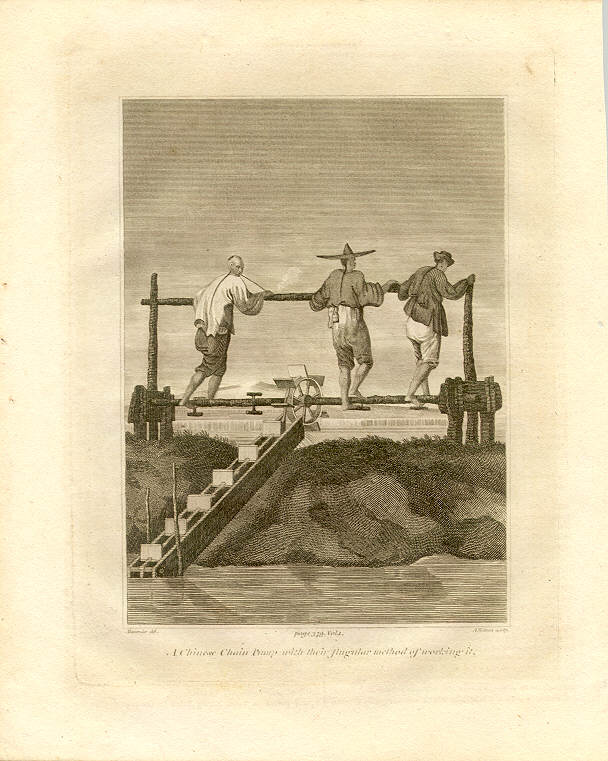 Chain pump for irrigation
Chain pump for irrigation
- Three levels of medicinal herbs, animal and mineral substances were categorized:
a. tonics and strengthening drugs (ginseng, fossil bones,
plantain seeds)
b. general nutritional drugs
c. medicines for specific treatments
- weights and measures were standardized, prices controlled, and agricultural
and horticultural experiments conducted
During the Han the territory of China was expanded vastly. Emperor Wu (r. 140-87 BCE) sent an envoy to Central Asia who (after having been held capture for many years) brought grapes and alfalfa back to the heartland of China. In addition a new philosophy entered China via the Silk Road during the Han: Buddhism.
Han tomb art mirrors everyday life at the time:
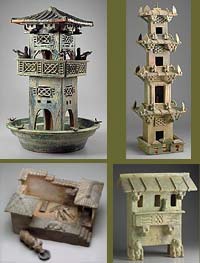 Han models
of watchtowers, a pigpen, and a house
Han models
of watchtowers, a pigpen, and a house
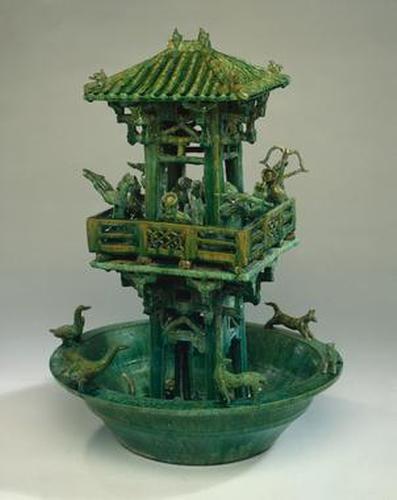
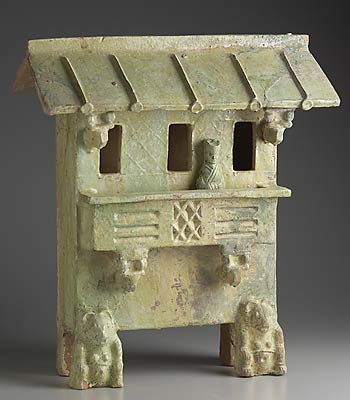
The period of disunity
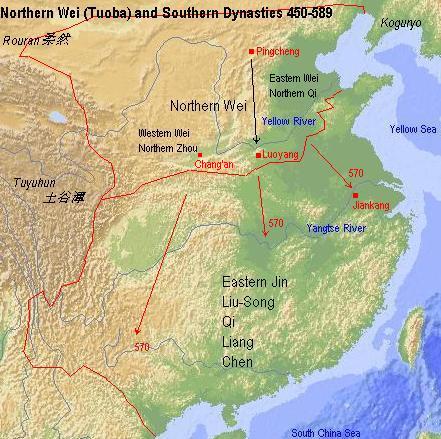
The Northern Wei
Shortly after the advent of Buddhism the Northern Wei (220-265
CE) introduced common landownership, a concept that was partially accepted but
co-existed with large estates of the social elite who were -just like Buddhist
and Daoist monasteries- tax-exempt. With Buddhism came the concept of 'warming'
and 'cooling' foods, probably originally developed in Persia, as well as tea
from Burma. The 'hot' and 'cold' qualities of foods were described in the Shennong
bencao (Pharmacopoeia of Shennong), a book on the medical qualities
of foods that was written by the Daoist recluse Tao Hongjing. Jia Sixie, a local
governor concerned with providing food for the population compiled
- all of his contemporary knowledge about agricultural techniques, including
sixty economic plants
- fermentation procedures
- dairy production of yoghurt, cheese, and butter, as consumed in the north
in a book titled Qimin yao shu (Ordinary people's needed skills)
The unification under Sui (581-618) and Tang Dynasty
(618-907)

The Sui territory
- The concern about land distribution led to an 'agrarian socialism'
based on the ability to work the land (men received more land than women and
aged people) and pay taxes accordingly.
- Imports from the north: Spinach, sugar beet, lettice,
almond, fig, grape wine
- Imports from the south: palmsugar, dates, yam, cardamom, taro, early ripening
rice for double cropping, citrus, cassia, banana, lichi
- Import from Burma: tea
- 'Export' to Japan: the tradition of eating raw fish (sashimi)